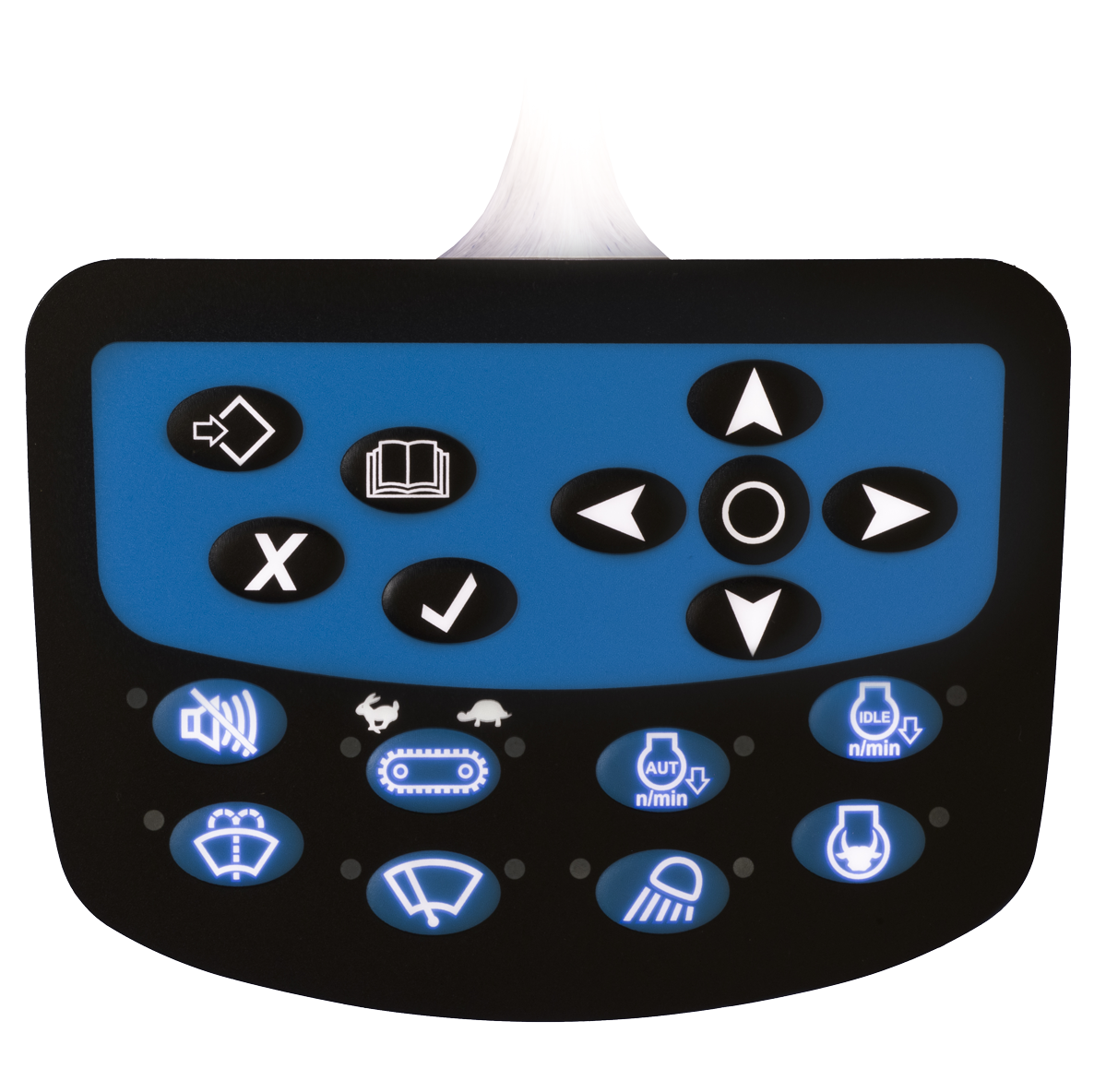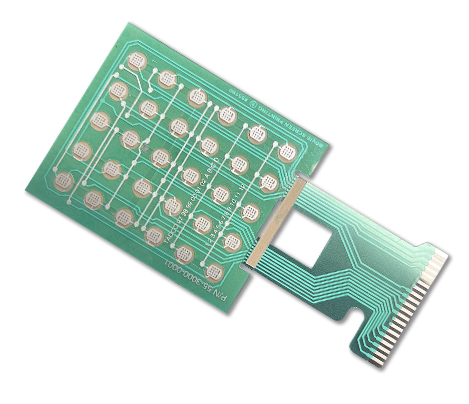Ensuring Quality and Longevity with Membrane Switches in Electronics
Ensuring Quality and Longevity with Membrane Switches in Electronics
Blog Article
Discover How Membrane Switches Function and Their Function in Modern Electronics
Membrane Switches represent an advanced integration of innovation and layout within the realm of modern-day electronics, serving as essential user interfaces in many tools. Included several layers, these buttons utilize pressure-sensitive systems to promote individual communication. Their applications extend various sectors, from customer electronic devices to clinical equipment, highlighting their adaptability and significance. Understanding the details of Membrane button functionality and their more comprehensive ramifications in boosting individual experience invites further expedition into their design, benefits, and the innovative advancements shaping their future in technology.
What Are Membrane Buttons?

Membrane buttons are distinguished by their durability and resistance to environmental aspects, such as dirt, wetness, and severe temperature levels. They can be customized with numerous graphics, shades, and responsive feedback options, enhancing individual experience while preserving aesthetic appeal - membrane switches. Moreover, the consolidation of published circuits enables seamless combination right into devices, improving total functionality.
The adaptability of Membrane switches is noticeable in their capacity to support both complicated and straightforward control functions. They can integrate features such as LED signs and touch-sensitive innovation, accommodating specific customer needs. As technology remains to develop, Membrane Switches stay necessary for allowing user-friendly and reliable interface, thereby playing a pivotal function in the innovation of modern-day digital gadgets.
Elements of Membrane Switches
Membrane switches are made up of several vital components that interact to develop a reliable and useful interface. The key elements include the graphic overlay, adhesive layer, spacer layer, and conductive traces.
The graphic overlay offers as the interface, generally published on a flexible substratum such as polyester or polycarbonate. This layer not just provides visual allure but likewise includes tactile feedback, visual cues, and protective functions. Under the visuals overlay exists the adhesive layer, which protects the switch to the tool and guarantees toughness versus ecological tensions.
The spacer layer is crucial for maintaining the necessary void between the visuals overlay and the circuit layer. This space enables the activation of the button when stress is applied. The conductive traces, typically made from silver or carbon, form the electrical paths that finish the circuit when the switch is engaged.
Furthermore, a backing layer might be consisted of for structural support and insulation. These components team up flawlessly, making sure that Membrane buttons are both resilient and user-friendly, making them crucial in various contemporary electronic applications.
Exactly How Membrane Switches Work
Just how do Membrane Switches function effectively within electronic tools? visite site Membrane Switches operate the concepts of pressure-sensitive technology, making use of a split construction that includes graphic overlays, adhesive layers, and conductive elements. When an individual uses pressure to the switch, the leading layer warps, allowing the conductive elements below to make get in touch with and complete an electrical circuit. This action sets off the desired feature within the gadget.
The layout of Membrane switches is important for their efficient procedure (membrane switches). The layers are meticulously engineered to give tactile feedback, longevity, and resistance to environmental elements such as dampness and dust. The inclusion of domes-- small, increased locations within the button-- improves tactile reaction, supplying users with an obvious click sensation upon activation
Moreover, Membrane switches can be customized in regards to size, form, and graphics, making them ideal for numerous applications. They are usually used in control panels, clinical gadgets, and customer electronic devices because of their smooth design and dependability. On the whole, the effective functioning of Membrane buttons is crucial in enhancing individual interaction and guaranteeing smooth operation in modern-day digital tools.

Applications in Modern Tools
Using their unique style and performance, Membrane switches have actually become integral elements in a wide variety of modern-day electronic gadgets. These versatile interfaces are used in customer electronics, industrial equipment, clinical tools, and vehicle controls, providing smooth individual communication.
In customer electronic devices, Membrane switches are commonly located in appliances like microwaves, washing machines, and other family gadgets, where they allow intuitive control with a streamlined profile. Their inconspicuous design helps with assimilation right into portable tools, enhancing visual charm without jeopardizing performance.
In industrial applications, Membrane Switches work as control board for machinery, using durability and resistance to extreme settings. Their capacity to stand up to wetness and impurities makes them excellent for use in manufacturing and handling markets.
Clinical tools also profit from Membrane switches, which are made to be easy to tidy and maintain, making sure hygiene in professional setups. They are typically utilized in diagnostic equipment, individual monitoring systems, and portable clinical gadgets, where integrity is vital.
Advantages of Membrane Buttons
One of the crucial benefits of Membrane buttons is their convenience, which enables them to be tailored for a selection of applications throughout multiple markets. These buttons can be designed in different sizes and shapes, accommodating special product demands while offering smooth integration into gadgets. Their slim account allows a streamlined and small layout, commonly enhancing the aesthetic appeal of digital items.
One more considerable advantage is their resilience - membrane switches. Membrane switches are normally immune to dirt, moisture, and chemicals, making them perfect for severe environments. This strength expands their life-span compared to conventional mechanical switches, lowering the requirement for frequent replacements
Furthermore, Membrane Switches offer cost-effectiveness. The manufacturing procedure entails printing technologies that lessen production click this expenses, specifically for big runs. This price, integrated with reduced maintenance demands, makes them an attractive option for Resources producers.

Conclusion
In final thought, Membrane Switches stand for a significant improvement in user interface modern technology within modern electronic devices. As the need for intuitive and durable interfaces proceeds to expand, the role of Membrane buttons in forming individual experience will unquestionably broaden.
Membrane Switches represent an advanced combination of innovation and style within the world of modern electronics, serving as important user interfaces in countless devices.In the world of modern electronic devices, Membrane Switches serve as essential components that facilitate customer communication with gadgets. As modern technology continues to develop, Membrane Switches remain necessary for making it possible for intuitive and efficient individual interfaces, therefore playing a crucial function in the improvement of modern-day electronic gadgets.
Just how do Membrane Switches feature successfully within electronic gadgets? In general, the efficient performance of Membrane buttons is crucial in boosting user interaction and making certain seamless procedure in modern-day electronic tools.
Report this page